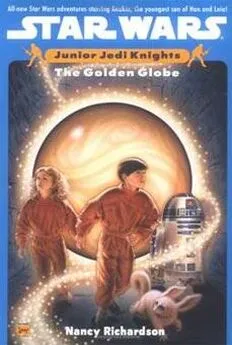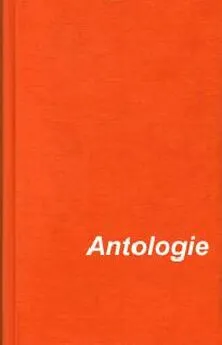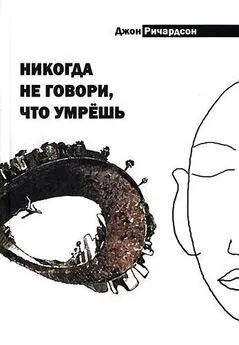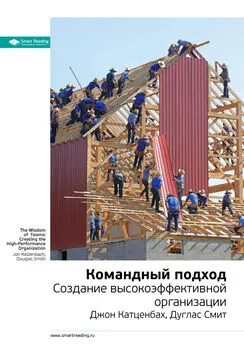Джон Ричардсон - Мысленные образы. Когнитивный подход
- Название:Мысленные образы. Когнитивный подход
- Автор:
- Жанр:
- Издательство:Литагент «Когито-Центр»881f530e-013a-102c-99a2-0288a49f2f10
- Год:2006
- Город:Москва
- ISBN:5-89353-187-6, 0-86377-843-7
- Рейтинг:
- Избранное:Добавить в избранное
-
Отзывы:
-
Ваша оценка:
Джон Ричардсон - Мысленные образы. Когнитивный подход краткое содержание
Учебное пособие написано с позиций когнитивного подхода и посвящено проблеме ментальных, или мысленных образов. Кратко, но систематично и на современном уровне освещаются разные аспекты психологии образов: переживание образов, образная репрезентация, образность той или иной стимуляции, образ как способ организации деятельности. Значительное внимание уделено методам исследования и диагностики образной сферы человека, а также мозговым механизмам, связанным со способностью к генерации образов.
Данное пособие в значительной степени восполняет пробел в доступной отечественному читателю психологической литературе и будет полезна не только психологам – студентам, аспирантам и научным работникам, – но также и всем тем, кого интересуют механизмы и закономерности познавательной деятельности человека.
Мысленные образы. Когнитивный подход - читать онлайн бесплатно ознакомительный отрывок
Интервал:
Закладка:
Jones, M.K. (1974). Imagery as a mnemonic aid after left temporal lobectomy: Contrast between material-specific and generalized memory disorders. Neuropsychologia, 12, 21–30.
Jones-Gotman, M. (1979). Incidental learning of image-mediated or pronounced words after right temporal lobectomy. Cortex, 15, 187–197.
Kapur, N. (1988). Memory disorders in clinical practice. London: Butterworths.
Kaufmann, G., & Helstrup, T. (1993). Mental imagery: Fixed or multiple meanings? Nature and function of imagery in creative thinking. In B. Roskos-Ewoldson, M.J. Intons-Peterson, & R.E. Anderson (Eds), Imagery, creativity, and discovery: A cognitive perspective (pp. 123–150). Amsterdam: Elsevier.
Kinsbourne, M. (1972). Eye and head turning indicates cerebral lateralization. Science, 176, 539–541.
Kintsch, W. (1972). Abstract nouns: Imagery versus lexical complexity. Journal of Verbal Learning and Verbal Behavior, 11, 59–65.
Kirby, J.R., Moore, P.J., & Schofield, N.J. (1988). Verbal and visual learning styles. Contemporary Educational Psychology, 13, 169–184.
Kocel, K., Galin, D., Ornstein, R., & Merrin, E.L. (1972). Lateral eye movement and cognitive mode. Psychonomic Science, 27, 223–224.
Kopelman, M.D. (1986). The cholinergic neurotransmitter system in human memory and dementia: A review. Quarterly Journal of Experimental Psychology, 38A, 535–573.
Kosslyn, S.M. (1973). Scanning visual images: Some structural implications. Perception and Psychophysics, 14, 90–94.
Kosslyn, S.M. (1980). Image and mind. Cambridge, MA: Harvard University Press.
Kosslyn, S.M. (1987). Seeing and imagining in the cerebral hemispheres: A computational approach. Psychological Review, 94, 148–175.
Kosslyn, S.M. (1994). Image and brain: The resolution of the imagery debate. Cambridge, MA: MIT Press.
Kosslyn, S.M., Alpert, N.M., Thompson, W.L., Maljkovic, V., Weise, S.B., Chabris, C.F., Hamilton, S.E., Rauch, S.L., & Buonanno,
F.S. (1993). Visual mental imagery activates topographically organized visual cortex: PET investigations. Journal of Cognitive Neuroscience, 5, 263–287.
Kosslyn, S.M., Brunn, J., Cave, K.R., & Wallach, R.W. (1984). Individual differences in mental imagery ability: A computational analysis. Cognition, 18, 195–243.
Kosslyn, S.M., Holtzman, J.D., Farah, M.J., & Gazzaniga, M.S. (1985). A computational analysis of mental image generation: Evidence from functional dissociations in split-brain patients. Journal of Experimental Psychology: General, 114, 311–341.
Kosslyn, S.M., & Koenig, O. (1992). Wet mind: The new cognitive neuroscience. New York: Free Press.
Kosslyn, S.M., & Pomerantz, J.R. (1977). Imagery, propositions, and the form of internal representation. Cognitive Psychology, 9, 52–76.
Kosslyn, S.M., Van Kleeck, M.H., & Kirby, K.N. (1990). A neurologically plausible model of individual differences in visual mental imagery. In P.J. Hampson, D.F. Marks, & J.T.E. Richardson (Eds), Imagery: Current developments (pp. 39–77). London: Routledge.
Lambert, A.J., & Beaumont, J.G. (1981). Comparative processing of imageable nouns in the left and right visual fields. Cortex, 17, 411–418.
Levin, H.S., & Goldstein, F.C. (1986). Organization of verbal memory after severe closed-head injury. Journal of Clinical and Experimental Neuropsychology, 8, 643–656. Levine, D.N., Warach, J. & Farah, M. (1985). Two visual systems in mental imagery: Dissociation of “what” and “where” in imagery disorders due to bilateral posterior cerebral lesions. Neurology, 35, 1010–1018.
Ley, R.G. (1983). Cerebral laterality and imagery. In A.A. Sheikh (Ed.), Imagery: Current theory, research and application (pp. 252–287). New York: Wiley.
Linn, M.C., & Petersen, A.C. (1985). Emergence and characterization of sex differences in spatial ability: A metaanalysis. Child Development, 56, 1479–1498.
Lister, R.G., & Weingartner, H.J. (1987). Neu-ropharmacological strategies for understanding psychobiological determinants of cognition. Human Neurobiology, 6, 119–127.
Loftus, E.F., & Loftus, G.R. (1980). On the permanence of stored information in the human brain. American Psychologist, 35, 409–420.
Logie, R.H. (1986). Visuo-spatial processes in working memory. Quarterly Journal of Experimental Psychology, 38A, 229–247.
Logie, R.H. (1995). Visuo-spatial working memory. Hove, UK: Lawrence Erlbaum Associates Ltd.
Logie, R.H. (1996). The seven ages of working memory. In J.T.E. Richardson, R.W. Engle, L. Hasher, R.H. Logie, E.R. Stoltzfus, & R.T. Zacks, Working memory and human cognition (pp. 31–65). New York: Oxford University Press.
Lorenz, C, & Neisser, U. (1985). Factors of imagery and event recall. Memory and Cognition, 13, 494–500.
McDaniel, M.A., & Kearney, E.M. (1984). Optimal learning strategies and their spontaneous use: The importance of task-appropriate processing. Memory and Cognition, 12, 361–373.
McDaniel, M.A., & Pressley, M. (1984). Putting the keyword method in context. Journal of Educational Psychology, 16, 598–609.
McDougall, S., & Velmans, M. (1993). Encoding strategy dynamics: When relationships between words determine strategy use. British Journal of Psychology, 84, 227–248.
McGeer, P.L. (1984). Aging, Alzheimer’s disease, and the cholinergic system. Canadian Journal of Physiology and Pharmacology, 62, 741–754.
McKelvie, S.J. (1979). Effects of instruction and format on reported visual imagery. Perceptual and
Motor Skills, 49, 567–571.
McKelvie, S.J. (1986). Effects of format of the Vividness of Visual Imagery Questionnaire on content validity, split-half reliability, and the role of memory in test-retest reliability. British Journal of Psychology, 77, 229–236.
McKelvie, S.J. (1995). The VVIQ as a psychometric test of individual differences in visual imagery vividness: A critical quantitative review and plea for direction. Journal of Mental Imagery, 29(3 & 4), 1-106.
Mandler, G. (1967). Organization and memory. In K.W. Spence & J.T. Spence (Eds), The psychology of learning and motivation: Advances in research and theory (Vol. 1, pp. 327–372). New York: Academic Press.
Marks, D.F. (1973). Visual imagery differences in the recall of pictures. British Journal of Psychology, 64, 17–24.
Marks, D.F. (1983). Mental imagery and consciousness: A theoretical review. In A.A. Sheikh (Ed.), Imagery: Current theory, research, and application (pp. 96-130). New York: Wiley.
Marks, D.F. (1990). On the relationship between imagery, body and mind. In P.J. Hampson, D.F. Marks, & J.T.E. Richardson (Eds), Imagery: Current developments (pp. 1-38). London: Routledge.
Marks, D.F., & Isaac, A.R. (1995). Topographical distribution of EEG activity accompanying visual and motor imagery in vivid and non-vivid imagers. British Journal of Psychology, 86, 271–282.
Marquer, J., & Pereira, M. (1990). Reaction times in the study of strategies in sentence-picture verification: A reconsideration. Quarterly Journal of Experimental Psychology, 42A, 147–168.
Marschark, M. (1985). Imagery and organization in the recall of prose. Journal of Memory and Language, 24, 734–745.
Marschark, M., & Cornoldi, С (1991). Imagery and verbal memory. In C. Cornoldi & M.A. McDaniel (Eds), Imagery and cognition (pp. 133–182). New York: Springer-Verlag.
Marschark, M., Cornoldi, C, Huffman, C.J., Pe,
G., & Garzari, F. (1994). Why are there sometimes concreteness effects in memory for prose? Memory, 2, 75–96.
Marschark, M., & Hunt, R.R. (1989). A reexamination of the role of imagery in learning and memory. Journal of Experimental Psychology: Learning, Memory, and Cognition, 15, 710–720.
Marschark, M., Richman, C.L., Yuille, J.C., & Hunt, R.R. (1987). The role of imagery in memory: On shared and distinctive information. Psychological Bulletin, 102, 28–41.
Marschark, M., & Surian, L. (1992). Concreteness effects in free recall: The roles of imaginal and relational processing. Memory and Cognition, 20, 612–620.
Marshall, J.C., Halligan, P.W., & Robertson, LH. (1993). Contemporary theories of unilateral neglect: A critical review. In LH. Robertson & J.C. Marshall (Eds), Unilateral neglect: Clinical and experimental studies (pp. 311–329). Hove, UK: Lawrence Erlbaum Associates Ltd.
Martin, C.J., Boersma, F.J., & Cox, D.L. (1965). A classification of associative strategies in paired-associate learning. Psychonomic Science, 3, 455–456.
Matthews, W.A. (1983). The effects of concurrent secondary tasks on the use of imagery in a free recall task. Acta Psychologica, 53, 231–241.
Meador, K.J., Loring, D.W., Bowers, D., & Heilman, K.M. (1987). Remote memory and neglect syndrome. Neurology, 37, 522–526.
Meador, K.J., Loring, D.W., Lee, G.P., Brooks, B.S., Nichols, F.T., Thompson, E.E., Thompson, W.O., & Heilman, K.M. (1989). Hemisphere asymmetry for eye gaze mechanisms. Brain, 112, 103–111.
Mesulam, M.-M. (1985). Attention, confusional states, and neglect. In M.-M. Mesulam (Ed.), Principles of behavioral neurology (pp. 125–168). Philadelphia, PA: F.A. Davis.
Mellet, E., Tzourio, N., Denis, M., & Mazoyer, B. (1995). A positron emission tomography study of visual and mental spatial exploration. Journal of Cognitive Neuroscience, 7, 433–445.
Meudell, P.R. (1971). Retrieval and representations in long-term memory. Psychonomic
Science, 23, 295–296.
Milner, B. (1966). Amnesia following operation on the temporal lobes. In C.W.M. Whitty, & O.L. Zangwill (Eds), Amnesia (pp. 109–133). London: Butterworths.
Milner, B. (1971). Interhemispheric differences in the localization of psychological processes in man. British Medical Bulletin, 27, 272–277.
Milner, В., Taylor, L., & Jones-Gotman, M. (1990). Lessons from cerebral commis-suro-tomy: Auditory attention, haptic memory and visual images in verbal associative-learning. In С Trevarthen (Ed.), Brain circuits and functions of the mind: Essays in honor of Roger W. Sperry (pp. 294–303). Cambridge, UK: Cambridge University Press.
Morris, P.E., & Stevens, R. (1974). Linking images and free recall. Journal of Verbal Learning and Verbal Behavior, 13, 310–315.
Moyer, R.S. (1973). Comparing objects in memory: Evidence suggesting an internal psychophysics. Perception and Psychophysics, 13, 180–184.
Mullen, B. (1989). Advanced BASIC metaanalysis. Hillsdale, NJ: Erlbaum.
Neisser, U., & Kerr, N. (1973). Spatial and mnemonic properties of visual images. Cognitive Psychology, 5, 138–150.
Ogden, J.A. (1985). Contralesional neglect of constructed visual images in right and left brain-damaged patients. Neuropsychologia, 23, 273–277.
Paivio, A. (1969). Mental imagery in associative learning and memory. Psychological Review, 76, 241–263.
Paivio, A. (1971). Imagery and verbal processes. New York: Holt, Rinehart, & Winston.
Paivio, A. (1972). A theoretical analysis of the role of imagery in learning and memory. In P.W. Sheehan (Ed.), The function and nature of imagery (pp. 253–279). New York: Academic Press.
Paivio, A. (1975a). Imagery and synchronic thinking. Canadian Psychological Review, 16, 147–163.
Читать дальшеИнтервал:
Закладка:







